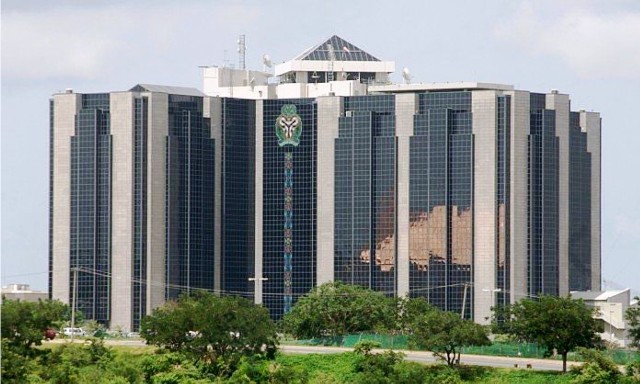Business
Sounds Heard In China Mine With 153 Trapped
Rescuers heard tapping sounds Friday from the pipes in a flooded Chinese coal mine where 153 workers were trapped more than five days earlier, and another rescue team reportedly heard shouts, an official said.
The sounds at the Wangjialing mine in the northern province of Shanxi were the first signs of life since the mine was flooded Sunday afternoon, rescue official Zhao Chuan said.
“I’m so happy to hear the news, and I think everybody is,” Tang Yinfeng, whose brother-in-law is trapped, said Friday night. “The rescue work is much faster than before. We’re grateful for their effort.”
Footage on the state broadcaster also showed rescuers tapping on pipes with a wrench, and then cheering and jumping for joy when they heard a response. One man wiped tears from his eyes.
Government officials say the flood was triggered when workers digging tunnels broke through into an old shaft filled with water. About 3,000 rescuers were working around the clock to pump water out of the mine Friday. Earlier, relatives had complained the work was proceeding too slowly.
Wen Changjin, an official from the news center set up at the site, said rescuers tapping on the pipes began to hear tapping responses from about 820 feet (250 meters) below ground at around 2 p.m.
Zhao told the associated press by telephone that he had heard from colleagues that another rescue team reported hearing people shouting underground as well but he could not immediately confirm that account. Wen said officials at the news centre had not heard reports of shouting.
He said rescuers have started sending glucose and milk down the pipes to the spot where the tapping was heard.
Zhao was quoted by state-run China Central Television as saying that an iron wire was found tied to a drill rod and rescuers think it may have been attached by one of the trapped miners. Images of the iron wire showed it had been shaped into a circle, with its ends twisted together.
The 153 workers were believed to be trapped on nine different platforms in the mine, which was flooded with up to 37 million gallons (140,000 cubic meters) of water, the equivalent of more than 55 Olympic swimming pools, state television has reported.
Rescuers said four of the platforms were not totally submerged, the state-run Xinhua News Agency reported Friday evening.
“It is believed that some workers may have a chance of survival,” a spokesman for the rescue headquarters, Liu Dezheng, told state media Wednesday. “We will go all out to save them.”
The water level underground had dropped by 2.6 yards (meters) as of noon Friday, our source reported.
David Creedy, a former mine consultant who now works in China as coal mine methane director for Sindicatum Carbon Capital, said if the mine’s tunnels remain open with no cave-ins, rescuers should be able to reach the miners by pumping out the water or sending a diver through.
He said the survival of those trapped depends on several factors, including how cold and wet they are and how much air is available.
“Certainly for the current time, a week or so, there’s a good chance,” he said.
Another mine safety expert said the quality of the air below ground was a concern.
“It’s not only the oxygen but whether the air has poisonous gases and whether the miners can drink the water or if it’s polluted, since it came from an abandoned mine,” added David Feickert, who advises the Chinese government.
A preliminary investigation found that the Wangjialing mine’s managers caused overcrowding in the shaft by assigning extra tunneling crews in a rush to finish the work, and ignored warning signs, the State Administration of Work Safety said.
“Water leaks were found numerous times on underground shafts,” but the mine’s managers “did not take the actions necessary to evacuate people,” it said.
It could prove to be the deadliest mine accident in China since a coal mine flood in eastern Shandong province in August 2007 killed 172 miners.
China’s coal mines are the world’s deadliest, despite a multiyear government effort to reduce fatalities. Most accidents are blamed on failure to follow safety rules or lack of required ventilation, fire controls and equipment.
Accidents killed 2,631 coal miners in China last year, down from 6,995 deaths in 2002, the most dangerous year on record, according to the State Administration of Coal Mine Safety.
Also Friday, officials said the death toll from an explosion at another mine in central China had risen to 19 people, with 24 still trapped underground.
A gas leak caused Wednesday night’s blast, according to a report on the Web site for Luoyang city in the central province of Henan.
In a third accident, a coal mine fire in the northwestern province of Shaanxi killed nine people Thursday evening, Xinhua said. Another 17 miners escaped. Xinhua did not say what caused the accident.
Business
FIRS Clarifies New Tax Laws, Debunks Levy Misconceptions

Business
CBN Revises Cash Withdrawal Rules January 2026, Ends Special Authorisation

The Central Bank of Nigeria (CBN) has revised its cash withdrawal rules, discontinuing the special authorisation previously permitting individuals to withdraw N5 million and corporates N10 million once monthly, with effect from January 2026.
In a circular released Tuesday, December 2, 2025, and signed by the Director, Financial Policy & Regulation Department, FIRS, Dr. Rita I. Sike, the apex bank explained that previous cash policies had been introduced over the years in response to evolving circumstances.
However, with time, the need has arisen to streamline these provisions to reflect present-day realities.
“These policies, issued over the years in response to evolving circumstances in cash management, sought to reduce cash usage and encourage accelerated adoption of other payment options, particularly electronic payment channels.
“Effective January 1, 2026, individuals will be allowed to withdraw up to N500,000 weekly across all channels, while corporate entities will be limited to N5 million”, it said.
According to the statement, withdrawals above these thresholds would attract excess withdrawal fees of three percent for individuals and five percent for corporates, with the charges shared between the CBN and the financial institutions.
Deposit Money Banks are required to submit monthly reports on cash withdrawals above the specified limits, as well as on cash deposits, to the relevant supervisory departments.
They must also create separate accounts to warehouse processing charges collected on excess withdrawals.
Exemptions and superseding provisions
Revenue-generating accounts of federal, state, and local governments, along with accounts of microfinance banks and primary mortgage banks with commercial and non-interest banks, are exempted from the new withdrawal limits and excess withdrawal fees.
However, exemptions previously granted to embassies, diplomatic missions, and aid-donor agencies have been withdrawn.
The CBN clarified that the circular is without prejudice to the provisions of certain earlier directives but supersedes others, as detailed in its appendices.
Business
Shippers Council Vows Commitment To Security At Nigerian Ports
-

 Featured4 days ago
Featured4 days agoOil & Gas: Rivers Remains The Best Investment Destination – Fubara
-
Nation4 days ago
MOSIEND Calls For RSG, NDDC, Stakeholders’ Intervention In Obolo Nation
-
Nation5 days ago
Hausa Community Lauds Council Boss Over Free Medical Outreach
-

 Nation5 days ago
Nation5 days agoOgoni Power Project: HYPREP Moves To Boost Capacity Of Personnel
-
Nation5 days ago
Association Hails Rivers LG Chairmen, Urges Expansion Of Dev Projects
-
Nation5 days ago
Film Festival: Don, Others Urge Govt To Partner RIFF
-

 News4 days ago
News4 days agoNDLEA Arrests Two, Intercepts Illicit Drugs Packaged As Christmas Cookies
-

 News4 days ago
News4 days agoTroops Rescue 12 Abducted Teenage Girls In Borno

